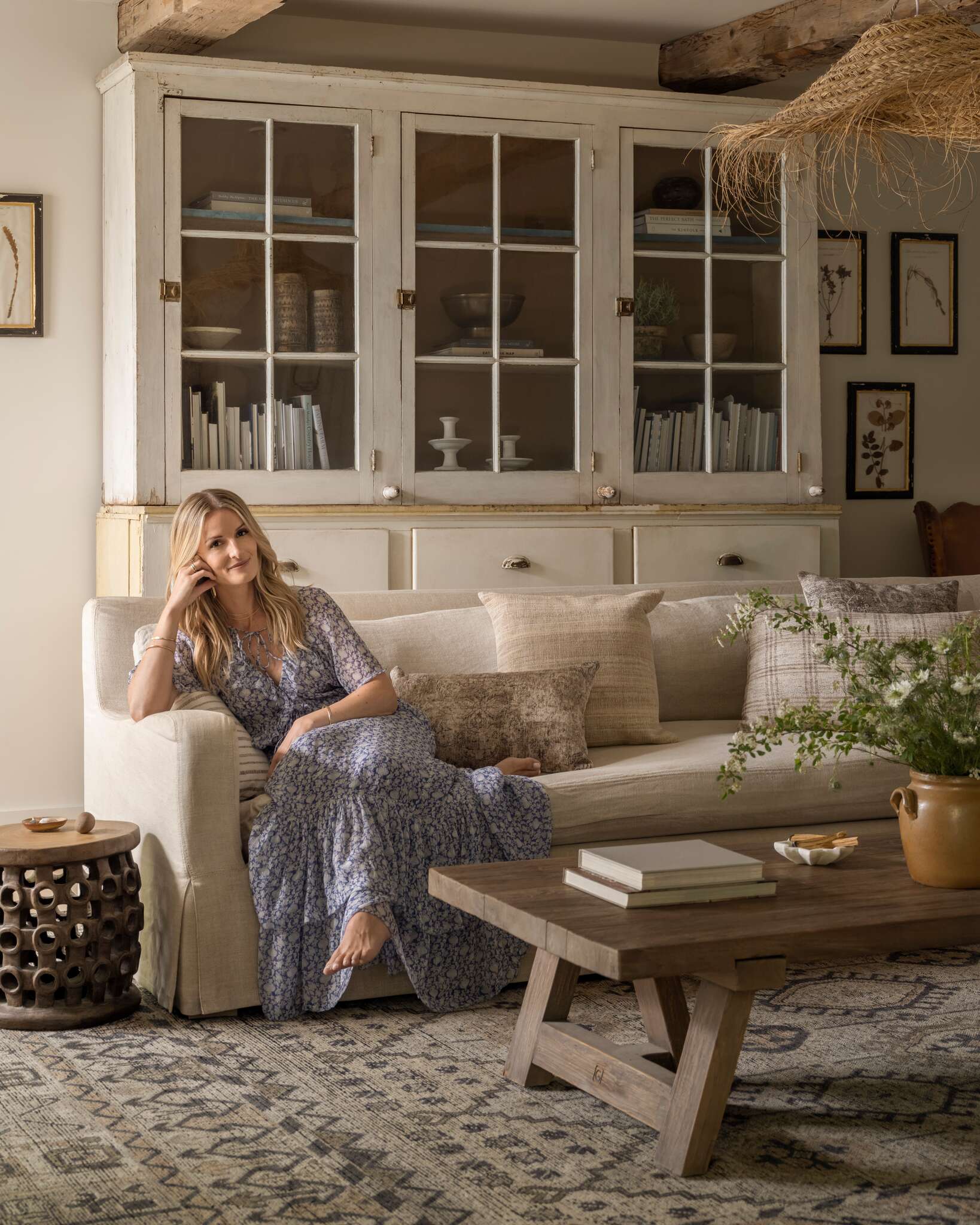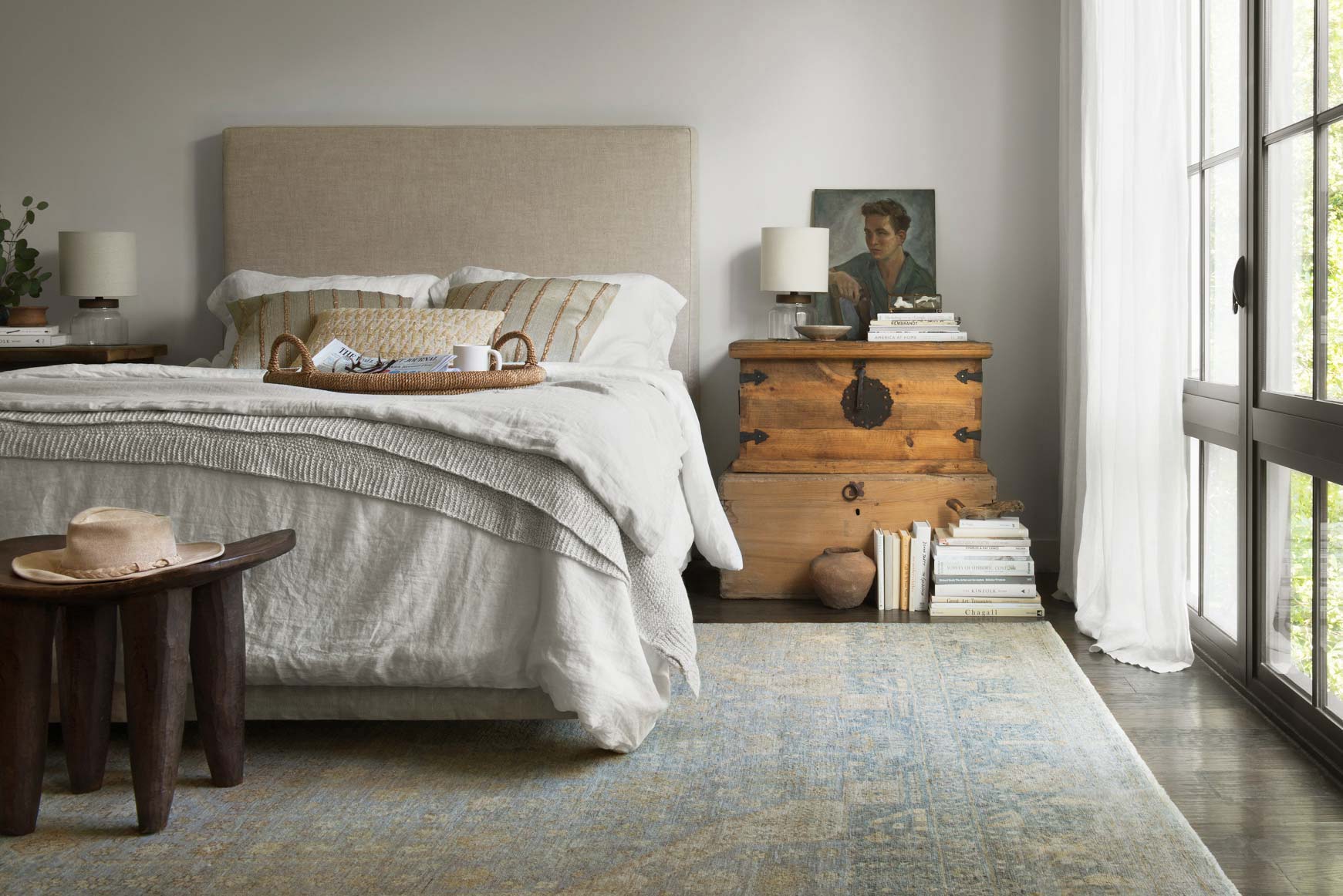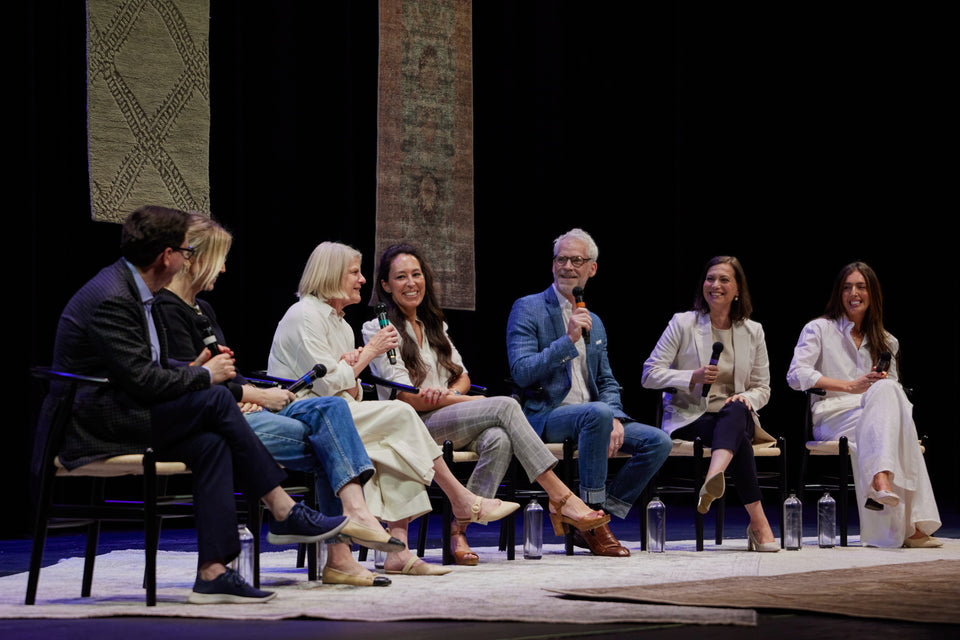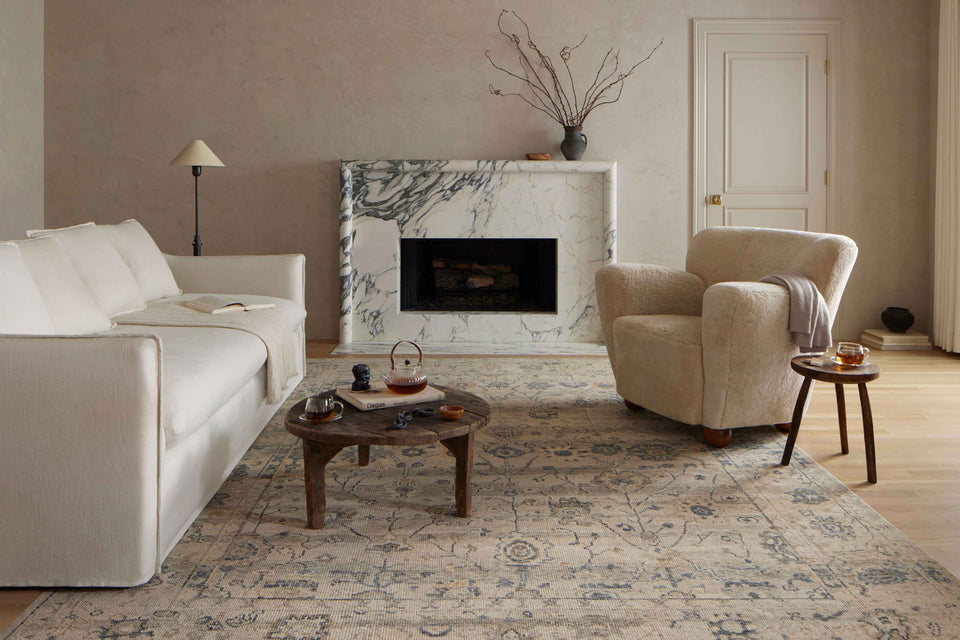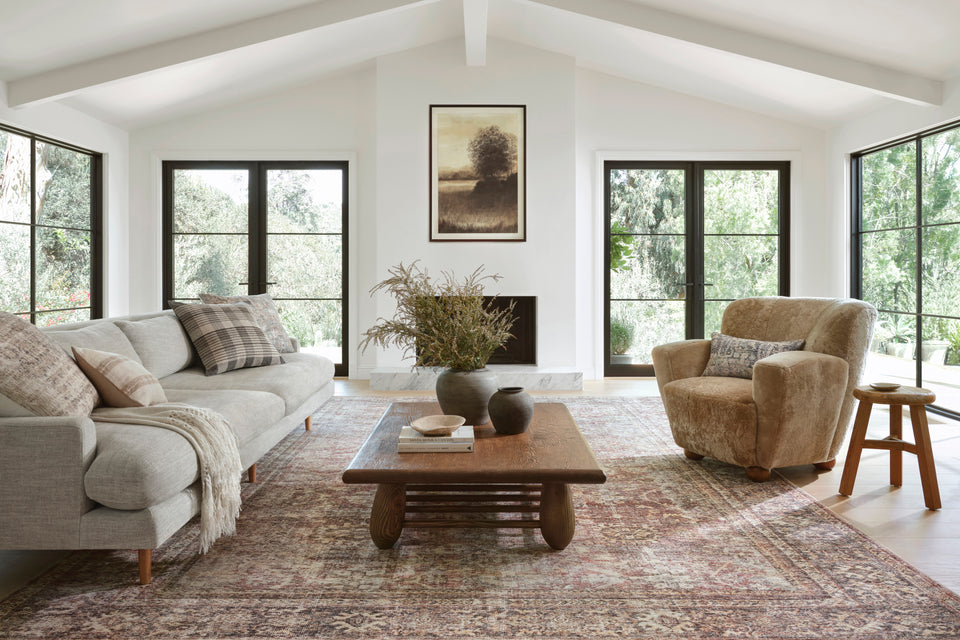Tara Mayer has called several places home—Maui, Wales, London, Paris—and several years ago she settled in Vancouver, where she now resides with her partner and their two daughters in a stunning, mid-century home nestled in the mountains above the city. Tara’s expertise in the material culture of India underpins her work as a historian and has made her a leading consultant for international exhibitions on Indian art and textiles. We had tea with Tara and asked for her insights on the beauty of handcrafted textiles and the process by which she selects pieces for her home.
The first rug I can remember covered the floor of my childhood bedroom on Maui. It was a gently textured expanse of wheat-coloured wool, dotted by angular motifs in black, sage, and ochre. My dad had commissioned it in his twenties, from a community of Tibetan weavers, while living in a remote village in eastern Nepal. It was weighty and substantial, and its appearance in my bedroom had occurred suddenly, after a failed attempt by my mom to get rid of it entirely. There were other rugs in my childhood, but the ones I was fondest of were made of humble cotton rags. These softened the concrete floors of our family home in South India; their lurid dyes reduced to soft pastels from years of sun exposure and frequent washings in the nearby stream.
As a student in London, I taught myself the Mongolian art of wet-felting. I gathered and experimented with natural dyes, and learned the difficult yet meditative practice of weaving on a floor loom. While my research centres on the cultural significance of textiles, a true understanding of these can never be divorced from the very fibres, processes, and communities that create them.



Loloi works in partnership with traditional weaving communities in India in the crafting of beautiful, hand-knotted rugs that are made from pure wool. The art of creating these rugs, which involves immense skill and labour, has survived intact in India for centuries despite increased industry reliance on more cost-effective, mechanized weaving technology. Hand-knotted rugs are undoubtedly an investment. They are made by human hands, involving weeks and sometimes months of labour, and no two are identical. Added to this are extremely subtle, yet inevitable variations resulting from dying an organic fibre like wool. Natural shades of ash, barley, heather, oat, moss, and ink first attracted me to this piece from Loloi’s Legacy Collection.
Its washed-out tones form traditional motifs that have been reworked for simplicity. Hand-knotted rugs are fine and pliable, and this one has been sheared-down for added patina. Ours rests upon a raw, concrete floor and adds softness to a space where the family gathers often. In selecting pillows and throws, I opt for wool and cotton which, when woven, have natural variations that enhance their beauty and lend texture to an otherwise neutral palette. I’ve never been fond of purely decorative objects and instead, look for high levels of craftsmanship and beauty in the functional objects that we touch, use, and live with daily—a favourite work bag, tea bowl, chair, towel, pillow or rug. Such pieces, when made well, age with us and become more cherished over time.
















